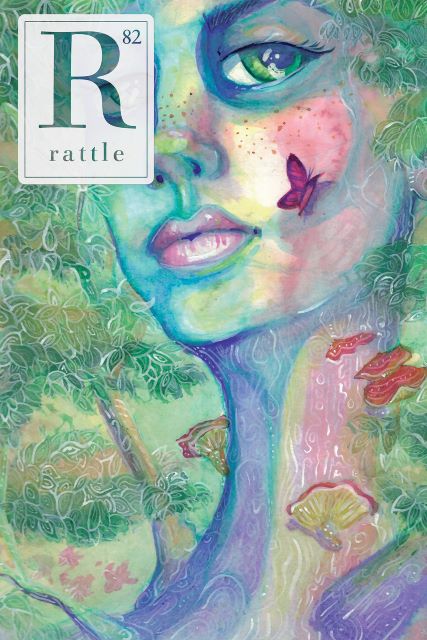
Early this year, a poet friend kindly passed along a recent issue of a fine poetry journal, Rattle. My surprising-even-to-me rush of interest in the dactylic meter came on the heels of reading the conversation section, highlighting the ideas of poet Annie Finch. From the Rattle website:
“The conversation section explores the intersection of meter and magic with “Poetry Witch” Annie Finch. Annie’s mission is to restore our interest in all five meters, beyond the standard iambics, while reconnecting our spirits to the body and the earth. We talk about it all in a fascinating discussion about the deep history of poetry and humanity.”
Since reading this conversation, I have realized how iambic I am, for the most part. My own first name, LES-lie, is trochaic, the reverse of the I-amb in terms of accent (or “stress”). I tend to think of trochees as the photographic negatives of iambs. But those trilling three-foot meters, dactyls and anapests, rarely caught my attention. (An anapest consists of the same kind of reversal of the stress pattern of the dactyl.)
Now that they have I am seeing how it is difficult for me to actually use this metrical form, or even to find modern examples of it in action.
Here is one fine illustration from John Hollander’s classic handbook, Rhyme’s Reason: A Guide to English Verse (Yale University Press, 1981)
"Dactyl" means / "finger" in / Greek, and a / foot that was / made up of / one long Syllable followed by two, like the joints in a finger was used for Lines made of six, just like these, in the epics of Homer and Virgil, Save that in English we substitute downbeats and upbeats for long-short. * In an an / apest up / beats start out/ in reverse of the dactyl's persuasion but end up no worse. (Yes, the anapest's name is dactylic--a curse?)
Paul Fussell‘s splendid magisterial treatise, Poetic Meter and Poetic Form (Random House, 1965; 1979) begins with an enlightening essay on “The Nature of Meter.” In it, he opens with a quote from Ezra Pound, “Rhythm must have meaning,” and later asserts, “…triple meters (based on anapestic or dactylic feet) seem inevitably to have something vaguely joyous, comical, light, or superficial about them.”
Lines of anapests, while not exactly common or even considered contemporary, are less thin on the ground than lines built of dactyls. Think of limericks, or of that classic, “‘The Night Before Christmas,” by Clement Clarke Moore, or even of Edgar Allen Poe’s “Annabel Lee.”
I am sure there must be modern dactylic poems of which I am unaware. (If you know of any, please share them with me!) In my hunt for them, I have turned up one that I just love. It’s by Wendy Cope, a brilliant British poet whose first book, Making Cocoa for Kingsley Amis, appeared in 1986. Her collection, Family Values, has a permanent place on my shelves. Cope is able consistently to craft poems that seem light but are never light-weight, rather the way an aerialist skips across a tightrope, making something very difficult appear easy to do. Cope uses a variety of metrical forms. Here is my favorite of hers in dactylic dimeter.
Emily Dickinson Higgledy-piggledy Emily Dickinson Liked to use dashes Instead of full stops. Nowadays, faced with such Idiosyncrasy, Critics and editors Send for the cops. ~ Wendy Cope

One of the things I love about this poem is how it made me notice that both “Emily” and “Dickinson” are perfect dactyls.
For now, my fingers have not managed to bring more than a single line or two of dactylic verse to the page. If I ever manage a whole poem, I shall share it here. I am hopeful that memorizing the opening to Longfellow’s “Evangeline” will work some kind of subterranean magic.
Meanwhile, waiting for the Muse, I mull…perhaps I can do something with the double trochees in “Pterodactyl”?
Wishing you a whimsical day,
LESLIE


I am learning things about poetry I never knew I never knew. Wish I could suggest a poem to you to satisfy your search but, I am the grasshopper here.
This is odd, Leslie–I have been thinking of pterodactyls all day…